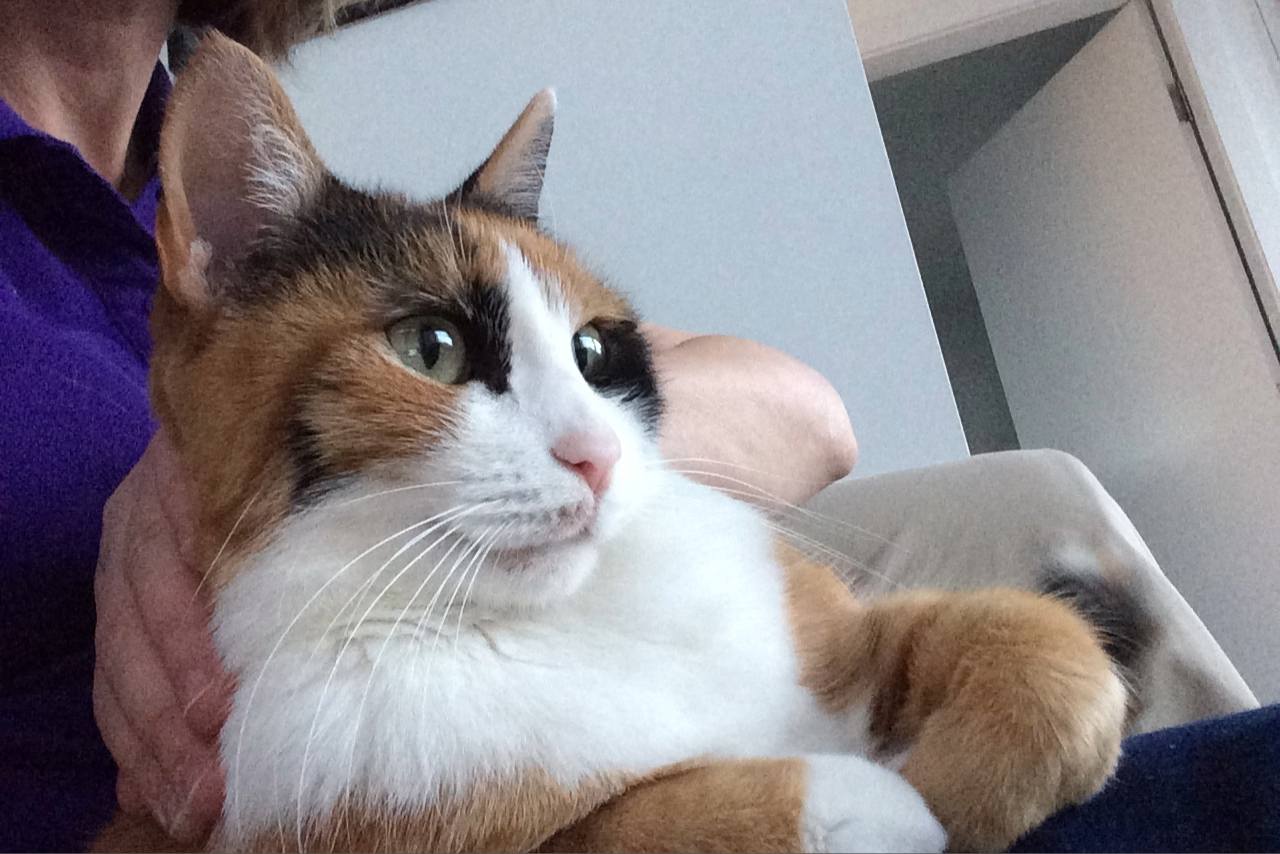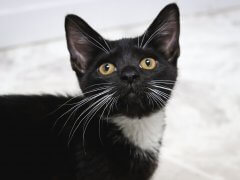
Melina Grin / Cats.com
A recent study from Washington State University has found what cat lovers know to be true: Cats, in all their quirks and fussiness, have great therapeutic qualities, and many of them could make just as great a therapy animal as a dog – even though the vast majority of therapy animals in America are dogs, and many people think cats are unsuitable for this work.
The study, published in the journal Animals, explored whether cats participating in animal-assisted services (AAS) – which help people with emotional, physical or mental challenges – have different behavioral traits than non-AAS cats. Indeed, the study found that AAS cats scored higher on sociability with people and cats, attention seeking, and predatory behavior. By contrast, AAS cats scored lower on resistance to restraint, compared to other cats.
These findings suggest that considering cats to be inferior to dogs as therapy animals is a misconception, says Patricia Pendry, a professor who is on the graduate faculty in prevention science at Pullman-based Washington State University.
“For years, people were kind of dissing cats,” Pendry says in an interview. People would say: “Cats aren’t suitable, and cats are difficult.”
But that’s not true, at least for cats with the easygoing and tolerant personality needed for therapy animals, she says.

Kirsten McCarthy / Cats.com
“They’re just a different kind of animal … and we should respect that,” says Pendry. “We want to really examine that myth that cats are not suitable for this kind of work.”
Pendry, who is originally from the Netherlands and speaks Dutch, has been researching human-animal interaction for several years. For this study, Pendry worked with researchers in Belgium and surveyed about 500 cat owners there about the behavioral traits their cats show. The researchers used a Flemish translation of the Feline Behavioural Assessment and Research Questionnaire. For those owners whose cats are involved with AAS, the study examined whether those cats showed different behavioral traits. They found that cats working in therapeutic roles were more sociable with people, more sociable with other cats, and more tolerant of being picked up and touched.
“They were all everyday cat owners, and only a small number of people met the requirements of saying, yes, this is definitely a therapy cat,” Pendry says. “We asked owners to describe their cats, and these (therapy) cats were more attention-seeking.”
In Europe, where therapy cats are more common than in the U.S., cats are more likely to spend time outdoors, meeting many different people – including at college campuses, many of which have unofficial campus cats who visit. These interactions between cats and people at universities give people an awareness of felines and how they differ from canines.
“If you are encountering a campus cat, you know that … it requires a different kind of behavior for humans to engage with that cat, and that’s a really positive thing,” Pendry says. “A cat is not going to tolerate certain things, whereas a dog is going to be obedient with their owner. It teaches people to be really mindful about the mutuality of an interaction.”
Does the study show that cats might even be better therapy animals than dogs? No, Pendry says – but, for certain people, cats may be a much better offering. Some people are uncomfortable with the enthusiastic energy and size of dogs, and would rather have a quiet, purring animal on their laps. That kind of patient is purrfect for a therapy cat, and they may miss the opportunity if only therapy dogs are available.
“You’re losing a potential participant in animal-assisted therapy because of their dislike or discomfort with dogs,” she says. “A cat might be the kind of animal they are interested in interacting with.”

Kirsten McCarthy / Cats.com
Cats have a soothing quality about them, especially when they purr, and that makes them wonderful therapy animals for many people, Pendry says.
“We know that, especially when we deal with older people who sometimes may have lost mobility, having a cat on your lap who sits there happily and loves to be pet and purrs can be a wonderful interaction,” Pendry says. “It makes the person feel: ‘Wow, this cat enjoys this.’ That makes us feel good. You feel really honored when a cat comes and sits with you. There’s something about that. You feel special when they do that.”
Pendry has three of her own cats – Red, Mango, and Charlie – and her fellow researchers also have personal experience with cats, so it wasn’t too surprising that many cats have traits that would make them thrive in a therapeutic role.
“We hypothesized that there are cats that can probably thrive in these settings,” Pendry says. “Is there some observable, measurable trait these cats have? As it turns out, there is.”
We have run a few articles about remarkable cats who became beloved therapy cats. A Hawaiian cat named Liza, who may have come from a hoarding house and was returned to the Maui Humane Society twice, was down on her luck. As Liza waited in a cage at a pet store, she spotted a woman whom she pegged as her person and pawed at her through the cage. Liza got adopted, and her mom saw something extra special in her purrsonality. Liza became a therapy cat, and she visits kids at a children’s hospital, many of whom are recovering from traumatic brain injuries. Patients are so excited to see the sweet brown tabby!
Then, there is Raul, a retired therapy cat who brought much joy to the children he visited. It started when Raul’s human mom, Sarah Morr, noticed that her easygoing cat didn’t seem to mind when her children’s play dates got loud and energetic – something that would lead many cats to run and hide. Morr got Raul certified, and he began visiting young children at school, where the cat kept them company during reading exercises. She started bringing in her other cat, Carl, to join the sessions, and pushed Carl through the halls in a baby stroller. How sweet!
Do you have an especially sweet, laid back, and tolerant cat that you think could be a purrfect therapy animal? According to the Pet Partners website, the animal therapy company is looking to double the number of cat-human pairs and offers online training. If your cat has the right temperament and you’re willing to invest the time and energy, I am sure some organization would love to have you.







